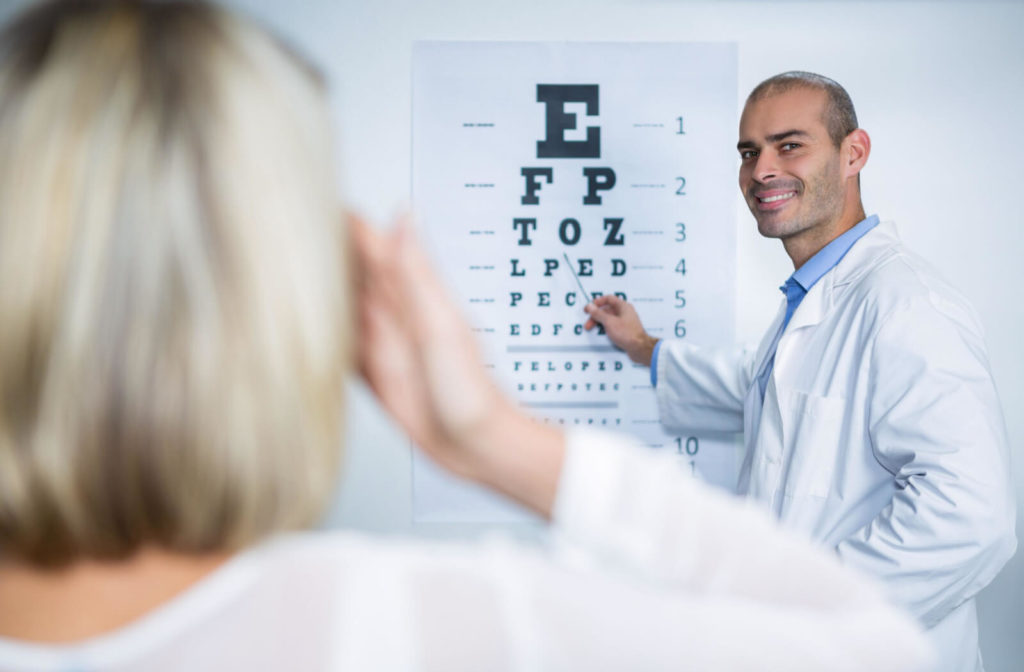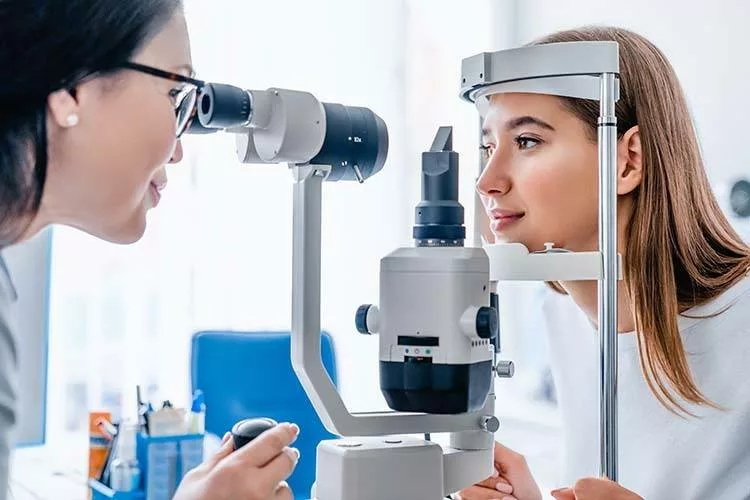The Relevance of Regular Examinations with an Eye Doctor Optometrist
The Relevance of Regular Examinations with an Eye Doctor Optometrist
Blog Article
Discovering the most recent Technical Developments in Optometry and What They Mean for Eye Doctors
In the ever-evolving field of optometry, current technical innovations are improving just how specialists approach eye treatment. From the precision of Optical Comprehensibility Tomography to the nuanced insights used by AI-driven diagnostic tools, these advancements are setting brand-new requirements in patient analysis and treatment. Teleoptometry is positioned to redefine access, making sure that experience transcends geographical limitations. As these developments penetrate the practice, optometrists are encountered with the challenge of embracing these devices to improve individual outcomes. The inquiry remains: just how will these technological shifts redefine the duties and responsibilities within the profession?
Advancements in Diagnostic Tools
Advancing the area of optometry, innovations in analysis tools have actually transformed the method eye treatment experts analyze and detect ocular problems and aesthetic problems. The previous decade has actually seen significant technological developments, allowing more precise and comprehensive evaluations. Optical Comprehensibility Tomography (OCT), for instance, provides high-resolution cross-sectional pictures of the retina, enabling for the early detection of conditions such as glaucoma and age-related macular deterioration. This non-invasive imaging technique has actually ended up being vital in contemporary optometric method.
One more trick technology is the introduction of innovative corneal topography systems, which map the surface area curvature of the cornea with accuracy. These tools are particularly valuable for fitting call lenses and diagnosing corneal problems. In addition, electronic retinal imaging has transformed conventional ophthalmoscopy, providing detailed, panoramic views of the retina that assist in complete visual assessments.
The development of wavefront aberrometry has actually additionally been critical, enabling the analysis of refractive errors with unmatched accuracy (Opticore Optometry). This modern technology helps in customizing rehabilitative lenses and boosting medical end results for refractive surgical procedures. Collectively, these diagnostic developments equip optometrists to supply premium person care, ensuring early treatment and customized therapy approaches, inevitably improving visual health end results
AI in Person Administration
Structure on the foundation of cutting-edge diagnostic tools, the unification of artificial knowledge (AI) in individual administration represents a transformative leap for optometry. AI systems are significantly employed to boost effectiveness, accuracy, and personalization in person care.
In addition, AI-driven platforms promote streamlined individual communications and administrative procedures. Automated organizing, online appointments, and customized follow-up strategies not just boost person contentment but also optimize time administration for practitioners. These systems can triage individuals based on the urgency of their problems, guaranteeing that those in vital demand get prompt focus.
Furthermore, AI enhances decision-making by offering eye doctors with evidence-based recommendations and therapy pathways. By incorporating information from electronic health and wellness records, AI devices provide understandings that notify professional decisions, minimizing the threat of mistakes and boosting client results. As AI continues to advance, its role in individual management will likely expand, reshaping the landscape of optometric treatment.
Advances in Retinal Imaging
In the realm of optometry, retinal imaging has seen exceptional technical innovations that are enhancing analysis abilities and client treatment. Developments such as Optical Coherence Tomography (OCT) and fundus photography have changed just how optometrists imagine and examine the retina.
Improved imaging methods like OCT angiography are more refining analysis precision. This non-invasive technique maps blood circulation in the retina, providing vital understandings into vascular health and wellness without the requirement for dye shots. Furthermore, adaptive optics technology is being integrated right into retinal imaging systems to correct ocular aberrations, delivering unprecedented photo quality. Such advancements help with the identification of min retinal adjustments that might represent condition progression.
In addition, innovations in expert system are boosting retinal imaging by making it possible for automated evaluation of huge datasets. These systems aid eye doctors in identifying patterns indicative of pathology, thus enhancing analysis accuracy and performance. Jointly, these technologies are changing retinal imaging right into a cornerstone of modern-day eye care, boosting end results and broadening healing opportunities.
Teleoptometry's Expanding Duty
Teleoptometry is significantly ending up being an important part of eye treatment, driven by developments in electronic communication and analysis devices. This is particularly advantageous in country and underserved areas where access to specialized eye care is commonly limited.
The integration of expert system (AI) additional boosts teleoptometry, making it possible for the evaluation of visual information and helping in the detection of ocular problems such as glaucoma and diabetic person retinopathy. AI-powered algorithms can swiftly translate complex imaging information, giving optometrists with important understandings that reinforce scientific decision-making.
Moreover, teleoptometry supports continuity of care through smooth integration with electronic health and wellness records (EHRs), my company enabling eye doctors to keep comprehensive client histories. When consulting with different specialists., this makes certain that patients get regular and customized treatment also.
Regardless of these advantages, obstacles continue to be, consisting of guaranteeing information safety and handling client assumptions. Teleoptometry represents a considerable stride towards more accessible, effective, and patient-centered eye treatment. As modern technology progresses, its role is positioned to expand further.

Future Trends in Eye Treatment
A myriad of cutting-edge patterns is readied to improve the future of eye treatment, driven by technical advancements and the evolving requirements of people. One substantial trend is the assimilation of synthetic knowledge (AI) in diagnostics, which promises to improve the accuracy and performance of eye assessments. AI formulas can evaluate large quantities of data from retinal photos, possibly detecting conditions like diabetic person retinopathy and glaucoma earlier than typical approaches.
Moreover, customized medicine is obtaining traction in optometry, with hereditary screening notifying tailored treatment strategies. This strategy aims to enhance client outcomes by tailoring interventions to specific genetic accounts. Wearable innovation, such as clever call lenses, is also on the horizon, supplying real-time monitoring of intraocular stress or glucose degrees, thus supplying constant understandings right into systemic and ocular health.
The fostering of increased reality (AR) and online reality (VIRTUAL REALITY) in training and client education is another emerging trend. These innovations provide immersive experiences that can boost understanding and abilities both for individuals and optometrists. As these patterns develop, eye doctors need to remain abreast of technical improvements to supply sophisticated care, guaranteeing enhanced individual results and satisfaction in the vibrant landscape of eye care.
Verdict

Collectively, these analysis innovations encourage optometrists to provide superior person care, making certain early treatment and tailored therapy techniques, eventually boosting aesthetic health and wellness outcomes.

As these technologies continue to evolve, eye doctors should adapt and include them into practice, inevitably enhancing workflow performance and raising the standard of eye treatment delivered to individuals.
Report this page